If your dog hasn’t been bathed for a long time, it may take longer to emit a strong odor and may have problems with fleas and ticks on its body. Therefore, it is important to wash your dog regularly. Some people go to grooming salons regularly, but many people want to know the correct way to bathe their dog, such as the relative frequency of shampooing and the temperature of the shower suited for dog care. So, this time we will introduce you to the correct way to bathe your dog.
 How Often Should You Shampoo Your Dog?
How Often Should You Shampoo Your Dog?
It is recommended to shampoo your track once or twice a month. Some owners shampoo their dogs once a week because they are concerned about the smell, but you need to be careful, as shampooing too much can cause versatile disadvantages. Like humans, dogs have sebum on their bodies, and shampooing too much can remove the requisite amount of sebum. Also, excessive shampooing can damage your dog’s skin, and in some cases, it can lead to diseases such as dermatitis. If your dog is prostrate to odor, try washing your dog with just hot water in one case or twice a week. We also recommend using milder shampoos to minimize damage to the skin.
What Is the Appropriate Temperature for a Shower?
Regarding the temperature of the shower, it is said that a temperature of 37 to 38 degrees is desirable. To humans, this is a temperature that feels “slightly lukewarm.” Because dogs are covered in fur, they cannot regulate their body temperature as quickly as humans can. Therefore, if you take a hot shower, your dog’s body temperature will rise excessively, which may deplete your dog’s stamina. Also, be sure to pay close attention to the temperature of your shower, as water that is too cold can cause you to catch a cold.
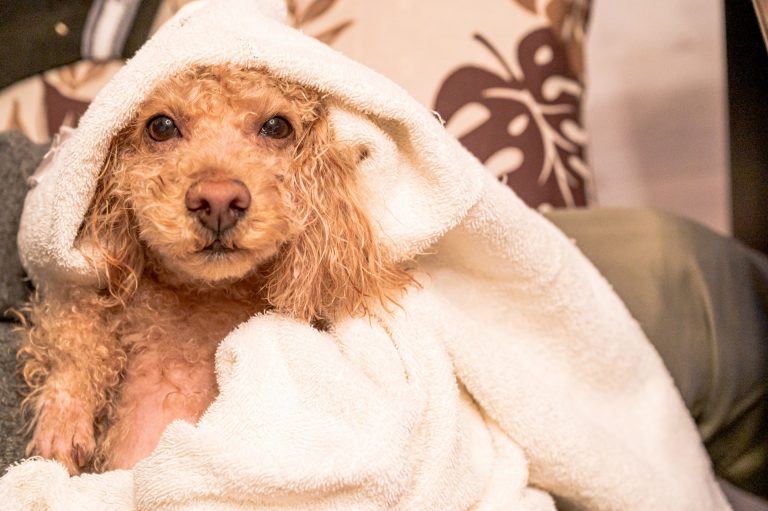 Precautions While Shampooing
Precautions While Shampooing
When it comes to shampoos for dogs, avoid using the same shampoos you use for humans. Shampoos used by humans are made specifically for humans, and can be too harsh for dogs, causing skin irritation. When shampooing, it is important to be careful not to get the shampoo in your eyes and wash gently. Use your fingertips or a sponge to massage the shampoo all over your body.
Also, if shampoo remains on your body, it may irritate your body and cause problems, so be especially careful when rinsing. The key is to take your time and thoroughly rinse off the shampoo using your hands.
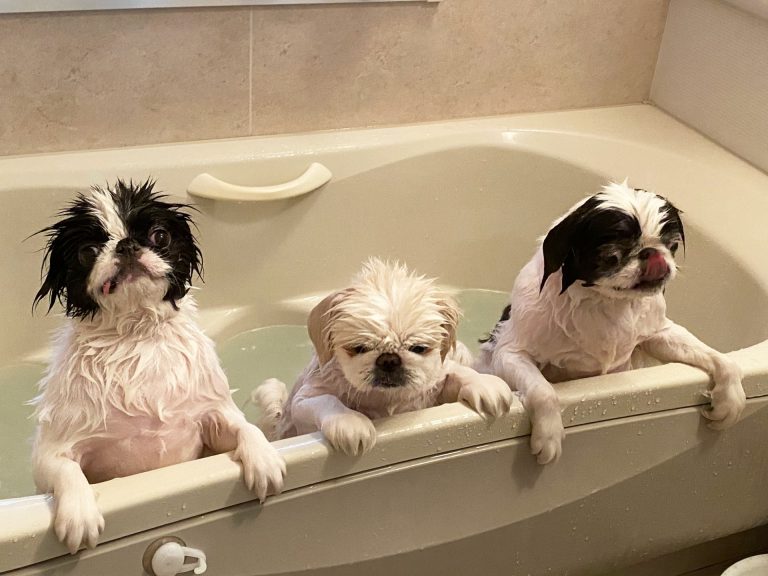 How to Get Your Dog Used to Bathing and Grooming
How to Get Your Dog Used to Bathing and Grooming
Once a dog feels “I don’t like it!” or “It’s scary!”, it will continue to be uncomfortable with that thing. If you suddenly give your dog a bath without getting used to it, there is a risk that he will not like taking baths in the future, so gradually get him used to baths by following the steps below.
Touch the dog’s body little by little with your hands
If you can’t touch your body in the first place, you won’t be able to take a bath or even do the bare minimum of cleaning. First, touch each part of your dog’s body little by little, such as the head, neck, back, and tail, to see if there are any areas where your dog doesn’t like being touched. Once you’ve identified your dog’s weak points, start by gently touching them for a few seconds while rewarding them, and gradually get them used to being touched.
Use the brush to touch the dog’s body
Once your dog gets used to being touched with your hands, you can start touching his body with a brush. If you try to comb the whole body at once, your go-after will turn reluctant to brush, so the key is to give him a reward like you would with your hands, and comb him a little at a time.
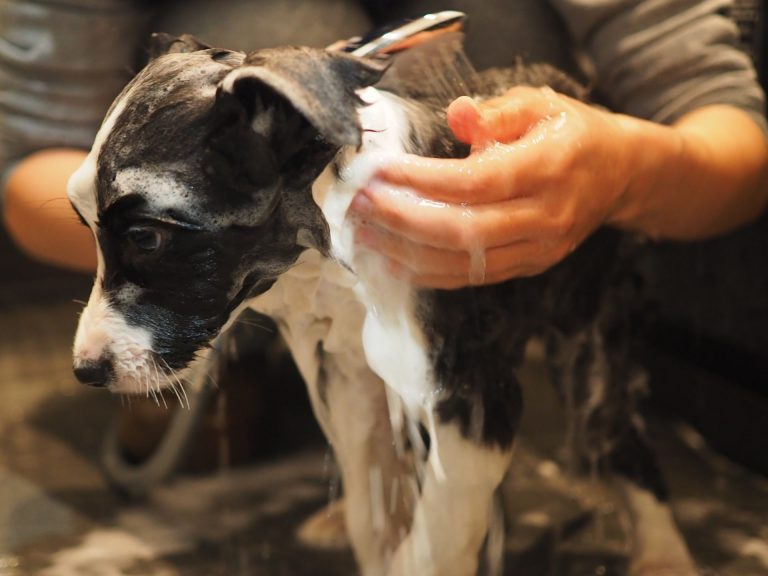 Get used to relaxing in the bathroom
Get used to relaxing in the bathroom
Some dogs may feel distressed just by taking a bath. First, try giving your dog a treat in the bathroom and see if he eats it. If your dog doesn’t get treats, there’s a big risk that he’s afraid of the place itself, so gradually get him used to spending more time in the bathroom and gift him treats.
Get used to the sound of the shower and the hot water little by little
Once your chase gets used to being in the bathroom, introduce him to the sounds of the shower while rewarding him. If you’re not afraid of the sound of a shower, try getting your feet and body wet by pouring a little bit of hot water on them.
Start shampooing with dry shampoo
As a final touch, try shampooing. Start by washing your tail with a dry shampoo that doesn’t get wet, and if your dog doesn’t like it, stop overusing the shampoo and give him a reward. Repeat this process until he can wash off his body with lathered shampoo.
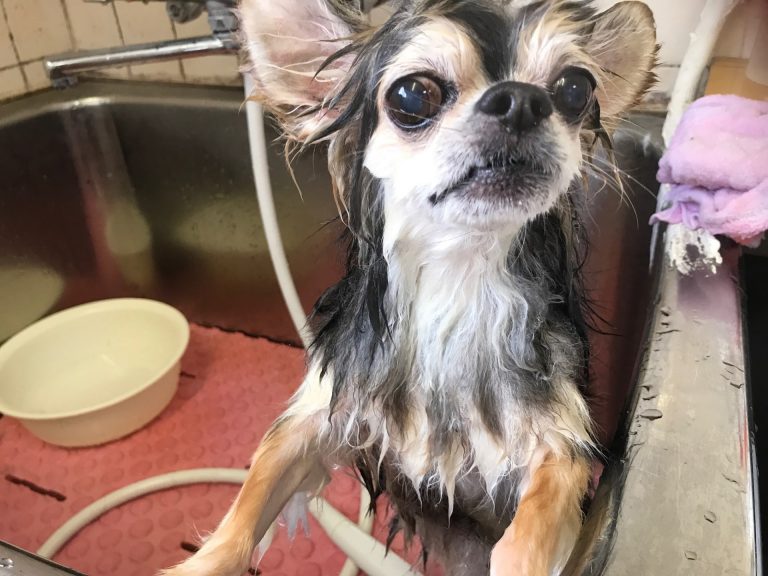 Steps and Tips for Drying Your dog After Using a Hair Dryer
Steps and Tips for Drying Your dog After Using a Hair Dryer
After bathing and shampooing, thoroughly dry your body with a hairdryer so that no moisture remains. Here are some tips for drying with a hair dryer:
If you are not used to it, do it with two people
If you are not used to bathing your dog, we urge that two people do it together. By splitting the roles between the person holding the dog and the individual applying the hair dryer, you can prevent uneven drying and ensure exhaustive drying.
If he doesn’t like it, put him on a leash so he doesn’t move
If your dog really dislikes the wreathe and noise of the hair dryer, try tying a leash to the legs of a chair or deferring in the corner of the room and letting it dry while preventing it from moving.
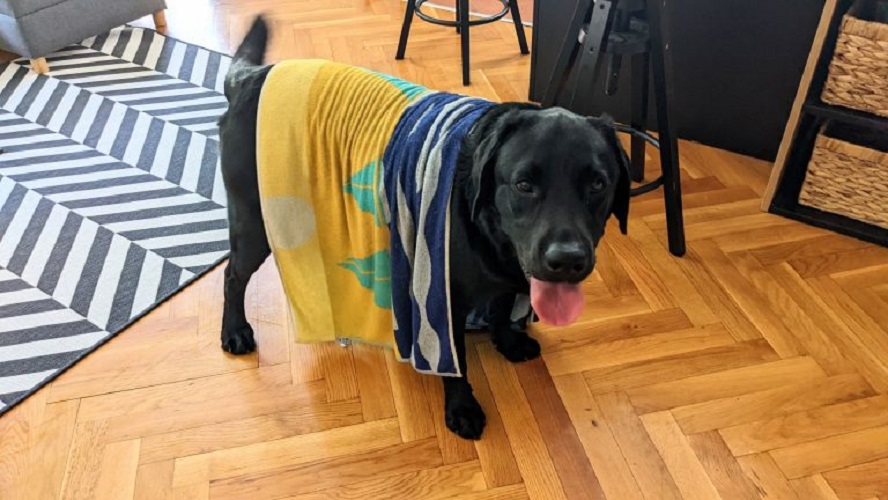 Dry without shaking while switching between warm and cold air
Dry without shaking while switching between warm and cold air
If you make the hair dryer excessively close, you run the risk of getting burned, and if you dry out the hair too far or while quivering it, inconsistent drying can induce skin problems.
It is key to hold the hair dryer about 30cm out from your dog’s body and switch between hot and cold vents every 2 to 3 seconds to properly dry each area.
Dry with a hair dryer and brush
It is also important to use a brush rather than your hands to thoroughly comb and dry. By using a brush, the vent from the hair dryer can strain deep into the hair, allowing it to dry faster.
Check to see if there are any leftovers left to dry
If the hair separates neatly one by one when you use the hair dryer, it’s a sign that the hair is thoroughly dried down to the roots. Make sure to check wholly the areas between your dog’s fingers, where they lean to be left untried, and if there are moisture areas, carefully dry them until the fur flutters in the wind.
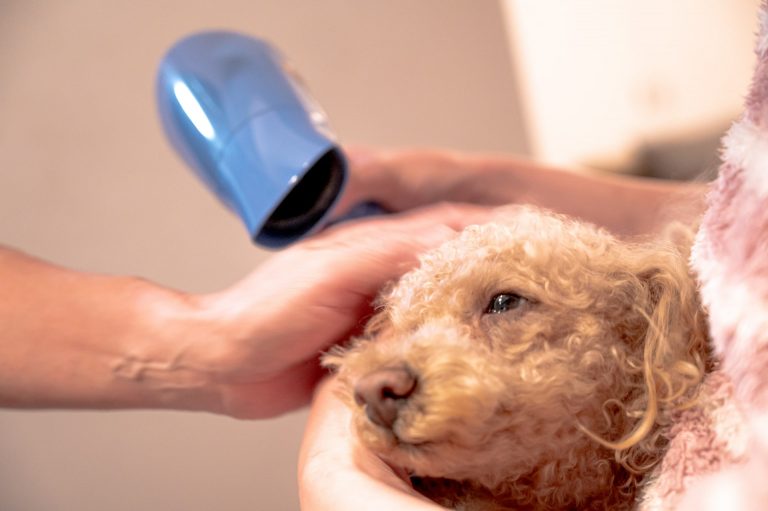
Introducing the correct way to shampoo your dog. A dog’s skin, which is protected by fur, is basically delicate. Keep off victimizing shampoos made specifically for humans, even if they claim to be of high quality or hypoallergenic. It is also important to refrain from shampooing when you are not feeling well. Depending on their personalities, some dogs may dislike shampoo itself. To keep from giving your dog too much stress, follow the appropriate methods and gradually get your dog used to them. Please try to put as little strain on your dog as possible.

